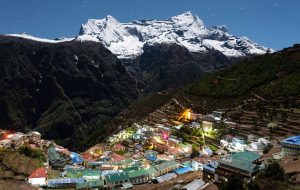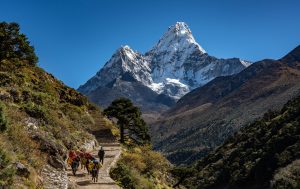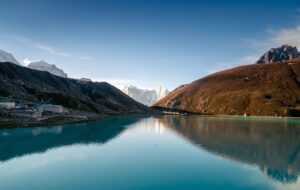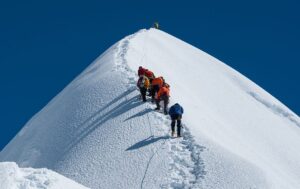Trekking and Climbing Guide
Our experienced and certified guides are crucial to the success of the expedition. They are knowledgeable about the terrain, weather conditions, and altitude challenges. They will provide instruction on technical climbing skills, ensure safety protocols are followed, and offer support and encouragement throughout the journey.
Porter Service for Mera Peak Climbing
Porters will carry the majority of your gear, allowing you to focus on the trek and climb. Each porter can carry up to 20-25 kg, so it’s important to pack accordingly. You will only need to carry a daypack with essential items during the trek.
Prepare for Acute Mountain Sickness (AMS)
AMS is a serious concern when climbing at high altitudes. Symptoms can include headache, nausea, dizziness, and shortness of breath. Our itinerary is designed to minimize the risk of AMS through gradual acclimatization, but it’s important to recognize the symptoms and report them to your guide immediately. Staying hydrated, eating well, and resting are key to preventing AMS.
Travel Insurance
Comprehensive travel insurance is mandatory for Mera Peak climbing. Ensure your policy covers:
- Medical Coverage: Including evacuation and repatriation.
- Climbing Coverage: Coverage for high-altitude climbing (up to 6,500m).
- Accidental Coverage: Protection against accidental injuries.
- Emergency Assistance: 24/7 support services.
It’s important to verify that your insurance policy covers all planned activities and altitudes. Obtain your insurance before departure.
Mountain Amenities
During the trek, accommodations will be in basic teahouses with shared bathrooms. At Mera High Camp, you will stay in tents. Meals are simple but nutritious, designed to provide the necessary energy for trekking and climbing. Showers are available in some teahouses but may not be available at higher altitudes.
Tipping Culture
Tipping is a customary practice in Nepal, and it is a way to show appreciation for the hard work of your guides and porters. A general guideline is to tip 10-15% of the total cost of the expedition, which will be distributed among the staff. Your guide can provide more detailed advice on tipping during the trip.
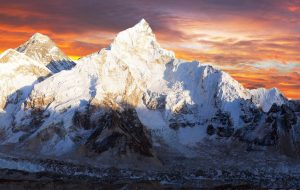 Everest Region
Everest Region

